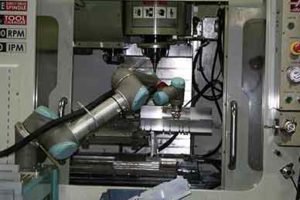Is extruded aluminum gaining traction as a mainstream OEM choice for designing, engineering and producing component parts? Depending on the market sector and application, aluminum extrusion frequently is an institutionalized supply chain approach to optimizing design and engineering, reducing manufacturing costs, and accelerating time-to-market.
Aluminum is approximately one-third the weight of iron, steel, copper or brass. Using extruded aluminum to concentrate or add strength precisely where needed creates “strength-to-weight” performance that is giving the method a more visible supply chain profile.
Design versatility, lower-cost tooling and customization options inherent in aluminum extrusion create advantages that set higher expectations for what is possible. Certainly, from the perspective of enhanced component performance, extrusion enables cost efficiently executing complex features, precision accuracy, and ever-tightening tolerances. Total-cost-to-produce-innovations that optimize manufacturability, streamline assembly, and reduce lead times also make aluminum extrusion a manufacturing method of choice.
Critical advances in alloy formulations, combined with ongoing extrusion process innovations, are the core factors promoting aluminum as a key influence in manufacturing. Replacing carbon with Kevlar to prevent markings, along with tailoring quench systems to the extrusion thickness for balanced cooling, are examples of why aluminum extrusions have become more cost competitive, more cosmetically appealing, and capable of tighter tolerances. But fully evaluating extruded aluminum for new or expanded roles that influence supply chain efficiency, effectiveness and economics requires a 360-degree view of manufacturing.
Design and Engineering
An optimal product development environment gives OEM product designers and engineers the freedom to innovate on quality, precision, functionality and performance, while optimizing manufacturability to lower total cost and compress lead-times. Extruded aluminum versatility – especially when combined with the market- or application-specific expertise of an extruder’s design, engineering and manufacturing specialists – promotes holistic and forward-thinking new product development outcomes.

The flexibility to design components for near-net shape production makes optimal use of aluminum extrusion’s potential and reduces or eliminates secondary operations. When extruded components do require additional machining or fabrication to deliver a finished product, high-end precision machining is critical.
Complete development-stage solutions for manufacturing consider a component’s essential functions, plus the interactions with and impact on other parts. The total cost of production, plus performance against requirements for aesthetics, durability and weight also drive competitive advantage.
A single extruded profile, for example, can replace rolled shapes riveted together, resulting in higher strength while eliminating joining costs. A designed extrusion can also eliminate welded assemblies, reducing cost while increasing strength and accuracy.
Extruding a component to exact size and shape can reduce or eliminate the cost of secondary machining operations. Extrusion profiles also can be made to precise or standard dimensional tolerances, according to the specifications critical to specific component features. Applying only the critical-to-function tolerances to the print reduces manufacturing time.
The differing material properties enable product designers and engineers to specify the aluminum alloy best suited to a component’s critical design absolutes, functional needs, estimated annual usage, and secondary manufacturing operations. Alloys like 6063 and 6005A, for example, extrude at faster rates than 7000-series alloys. The majority of aluminum extrusions utilize 6063, but new, leading-edge alloys produce stronger, lighter extrusions.
Bending and Stretch Forming
As noted above, suppliers can extrude and bend aluminum to unique specified tolerances or standard dimensional tolerances. While dimensions and bend angles can be methodically measured and re-measured, however, the end product is only as precise as the bending equipment or method used.
Different bending and stretch forming methods deliver different results. When precision-manufactured aluminum parts involve bent and formed extrusions, designers need to consider a range of factors that can affect final fit and finish. These factors include expected tolerances on the inside radius, the outside dimension radius, overall length of the part, surface areas critical for appearance, and mechanical strength achieved through artificial aging.
Engineers specializing in aluminum extrusion can provide crucial input on the bending, shaping and forming method best suited to design intent, critical and non-critical features, functionality, tolerances and total production cost.
Precision Machining, Fabrication
In an application where extruded components require secondary machining and fabrication to deliver a finished product, critical extrusion supplier capabilities include: precision 4- and 5-axis CNC systems, vertical machining centers, and equipment for precision cutting, deburring, complex punching, mechanical finishing, laser engraving, turning, grinding, honing, broaching, notching and swedging.
Extrusion is immediately more cost-effective per-part because it minimizes material content and removal, while holding close tolerances to achieve dimensional accuracy within thousandths of an inch. Highly cost-efficient extrusion tooling that can produce profiles in virtually any shape, avoids secondary operations that increase manufacturing time and cost.
